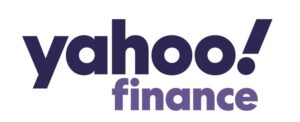By Anthony Ashe
According to the Department of Education nearly 42.9 million people, about one eighth of the United States, carry student loan debt.
In fact, the Federal Reserve says that American owe more than $1.7 trillion in student loans taken out for college or other post-secondary school training as of June 2021. The average student loan payment per month is about $350. To give you a comparison, the average new car loan is $563 for new vehicles, and used cars is $397. And depending on how much you owe on your student debt, it can take 10 to 30 years to pay it off.
Americans are taking on auto loans in record-setting amounts and for longer stretches. To get the full picture of auto loan debt and trends in the U.S., we looked at auto loan originations, prices, term lengths and delinquencies, among other aspects of auto debt in the U.S. Here are the numbers.
I’m a senior Strategic Communications major at the University of Missouri, and I’m one semester away from becoming a part of that community. While I won’t have the same amount of debt some of my peers do, it’s still something that is and will continue to be a part of my life.
When I was applying to college, I had an understanding that I probably wouldn’t get a full scholarship to attend college and would have to take some level of personal loans. I didn’t make my choice solely based on the finances but based on scholarships I ended up attending the cheapest option available to me. The price combined with the programs available here made it the best value available.
I have a fixed interest loan, meaning I pay $25 a month for each loan I’ve taken. This option has an impact on my life now, but I believe ultimately is the right choice to make for my situation. This isn’t a significant financial burden, but it is something that requires me to have a job and gives me another cost on top of rent and regular life expenses. I don’t feel that I’m deficient in anything I have access to or the ability to do, but it adds to things I have to consider in my day to day.
This results in some uncomfortable situations with peers, or just the realization that we have different levels of responsibility and burden when it comes to our education. I don’t think this has to get in the people you interact with, but there are natural differences that arise. Not being able to go out to eat as much or affording the same type of living situation are examples of some of the differences in decisions I make compared to some of my peers.
I’m not particularly happy that I’ll have to repay loans when I graduate, but it helped me to get an education that I feel very fortunate for. I think we should have conversations about loans earlier with high schoolers thinking about college. Loans are a tool for financial aid, and if used responsibly can enable people to find opportunities they might not otherwise. Emphasizing the importance of finding a good value and using all the tools for financial support available is essential. Loans might be unavoidable for some when attending college, but if used responsibly don’t have to be a lifetime burden.
Ashe is a senior studying strategic communications at the University of Missouri School of Journalism.





